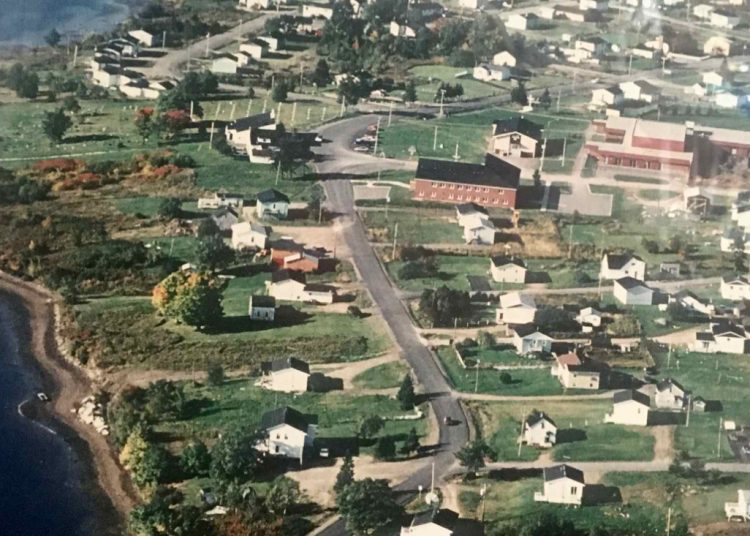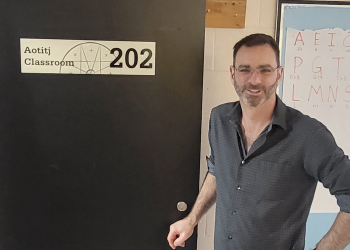Elsipogtog is currently in negotiations with New Brunswick and the federal government over an Indigenous title assertion case and a so-called specific claim. What does this mean?
Watch the interview with Amy Sock of the Elsipogtog Claims Centre:
According to Professor Robert LeBlanc of St. Thomas University, who teaches native studies, there are basically three types of “claims” related to Indigenous title and land ownership. These include so-called land claims, which are the most common; title cases, which are relatively rare; and specific claims.
The comprehensive land claims process — or the modern treaty process, as you may have heard it called — is “an agreed upon set of comprehensive set of things that get hammered out at the negotiation table that could take place over decades,” LeBlanc said.
The expected outcome of this process is some degree of Indigenous sovereignty and a final monetary settlement, meaning that no more bargaining takes place with the government over the land in question.
Title assertion cases have only been completed once, namely with the Tsilhqotʼin Nation in modern-day B.C. That case is relevant because it involved unceded land, like in the Mi’kmaq territories. The process involves litigation to prove that title still exists, meaning that when companies or individuals want to use the land, they must lease it from Aboriginal people instead of from the Crown.
“A lot of people think this means they’ll just kick New Brunswick out, including New Brunswickers,” LeBlanc said. “But that’s not what asserting title claims is about. It’s about establishing the basis for an economy, a basis that was taken away through the process of colonization.”
This means asserting a form of sovereignty that runs parallel to the sovereignty of the Canadian state. “The title claim system is the means through which it’s demonstrated that multiple sovereignties can exist in a given territory,” LeBlanc said.
Specific claims are far more varied, but also more self-explanatory, involving a specific issue that needs resolution. Leblanc gave the example of treaty annuity payments “in the amount of four or five dollars… which were, at the time the treaties were signed, significant amounts, but don’t keep pace with inflation.” Some specific claims attempt to reconcile that kind of discrepancy.
1824 Illegal Taking case
In Elsipogtog, a specific case dealing with the history of land encroachment is underway, as the reserve land was supposed to be a lot bigger than it is now. Amy Sock, a lawyer working with the Elsipogtog Claims Centre, outlined the land in question.
“Going towards the Richibucto River, it’s the land 10 miles up the river,” she said. “It’s four miles inland on each side, and 10 miles down. We own that land on both sides of the river.”
The original land was “marked down on a map from 1824 that describes Elsipogtog as being 54,000 acres,” she said. Today, the reserve land amounts to just 4,600 acres, according to the Claims Centre. Canada admitted that it had breached its obligations to the First Nation in 2020 and offered to negotiate a settlement.
Sock said that a land assessor was hired to help find out how much revenue may have been lost over the years, as homes and businesses belonging to settlers were built on the land.
Elsipogtog has received a $30 million advance from the feds while they negotiate this final settlement, and some of that money has been distributed to community members in $1,000 payments.
Mi’kmaq title case
Elsipogtog is also involved in a wide-ranging case involving Mi’kmaq title. “When we get to Aboriginal rights and treaty rights and unceded territory, we’re talking about the whole Maritime provinces… It’s really all unceded territory,” Sock said.
Elsipogtog filed its title claim in 2016. “Three female Indigenous lawyers compiled all the documents and maps, they gave everything they had to Canada and told them that they stole our land,” Sock said.
The land covered by that original court filing covers about 30 per cent of New Brunswick, as previously reported by the NB Media Co-op. The region, known as Sikniktuk, extends from south of Sackville, north along the Northumberland Strait, as far as Baie Sainte-Anne, and inland to the west as far as Saint John, on the Bay of Fundy.
Chief Arren Sock has stated that Elsipogtog launched the title assertion to protect the water and land for future generations.
Eight other Mi’kmaq nations more recently asserted title to a larger area overlapping with the territory previously claimed by Elsipogtog. Mi’gmawe’l Tplu’taqnn Inc., also called MTI — an Indigenous rights collective bringing together Mi’kmaq communities in the province — has said they are in discussions with Elsipogtog over harmonizing the two cases.

“The comprehensive land claim is in a larger scale and it encompasses more than half of the whole New Brunswick, where we consider it to be a Mi’kmaq unceded traditional territory,” Sock said.
Wolastoqey Nation launched a separate title claim covering the western part of the province in 2021, a case also involving territories overlapping with the Mi’kmaq claims. However, Indigenous leaders have said they’re not in competition.
Kopit Lodge, an organization representing the Elsipogtog First Nation on resource development issues, is negotiating with the province and the feds in what Amy Sock described as a comprehensive land claim also dealing with Mi’kmaq title.
“In Elsipogtog, Kopit Lodge is doing something like a comprehensive claim where they’re dealing with a multitude of different issues that have impacted us with the land,” she said. “The comprehensive land claim could also even include self-government, how we’re going to govern ourselves.”
Sock added that Kopit Lodge has begun talks with the different institutions including NB Power, to coordinate and inform them how the claim may affect them.
The idea is that by asserting Indigenous title over Crown land, the community would benefit from ongoing money transfers through royalties with these institutions for their use of the land.
Timeline on settlement
The timeline for this process to conclude is up in the air. It took the Tsilhquot’in Nation more than 20 years to win its title case. Amy Sock estimated that the Mi’kmaq title case might take a decade to resolve.
Recent political developments — notably the resignation of former Prime Minister Justin Trudeau followed by federal elections — have “rocked the boat” for negotiators, Sock said.
The previous federal leadership “really wanted to settle this with our chief and council,” she said, pointing to the $30 million advance payment as a show of goodwill. She said the new federal leadership will have to become familiar with the file.
Still, a referendum about the final settlement and how to allocate the money it is expected to take place as early as 2026, ahead of band elections. “It could be another couple of years, but I’m thinking that it’s going to be sooner,” Sock said.
The referendum will likely involve a number of options for how to use the funds. “I think that we’re going to have to stand strong as a community to make sure that we use this money wisely and also to think about the seven generations to come,” Sock said.
Lance Francis is a St. Thomas University student and a member of Elsipogtog First Nation. NB Media Co-op staff journalist David Gordon Koch contributed to this report. This reporting has been made possible in part by the Government of Canada, administered by the Canadian Association of Community Television Users and Stations (CACTUS).




![Elsipogtog comic convention to return in 2026 following first-ever event [video]](https://nbmediacoop.org/wp-content/uploads/2025/08/Screenshot-2025-08-28-at-13.47.38-350x250.jpg)

![Comic-con coming to Elsipogtog following ‘whirlwind’ of organizing [video]](https://nbmediacoop.org/wp-content/uploads/2025/08/East-Coast-Comic-Expo-19-350x250.jpg)
![‘Continuum of genocide’: Pentagon funding of Sisson mine provokes renewed opposition from Wolastoq Elders [video]](https://nbmediacoop.org/wp-content/uploads/2025/07/SissonMine-2-120x86.jpg)



